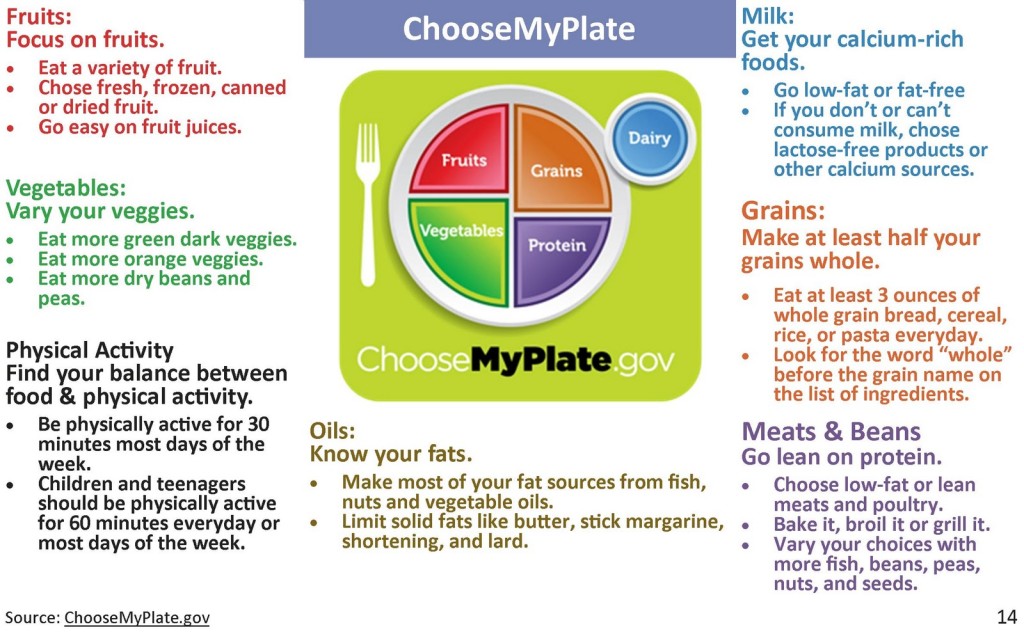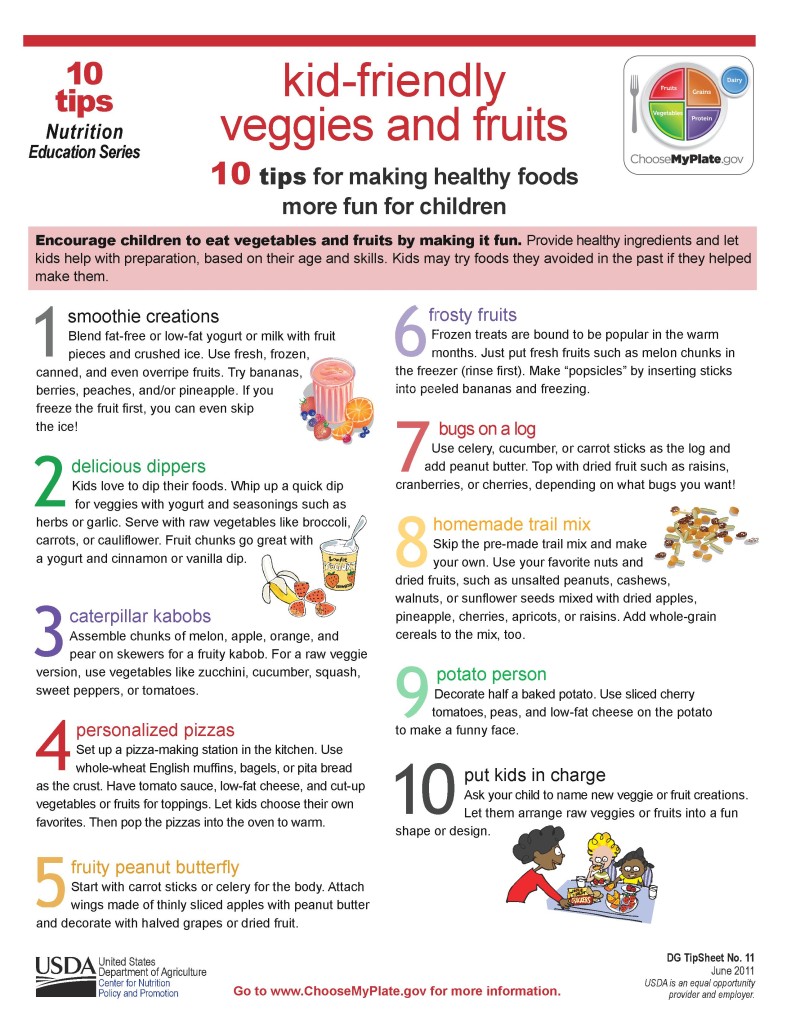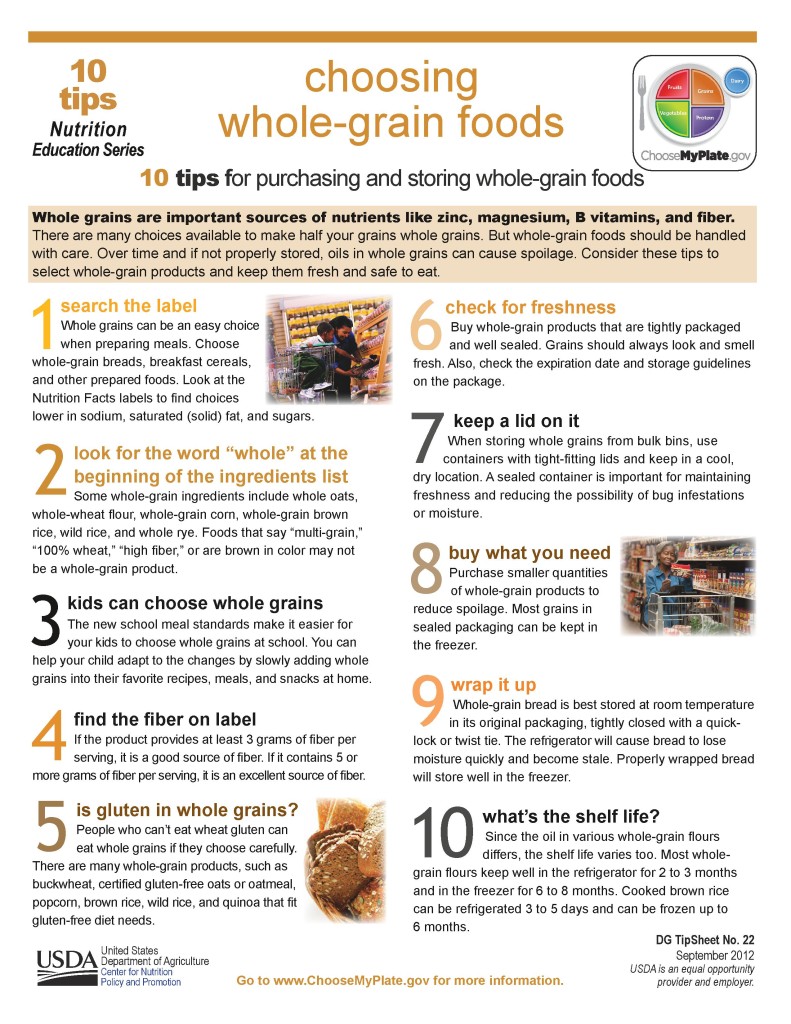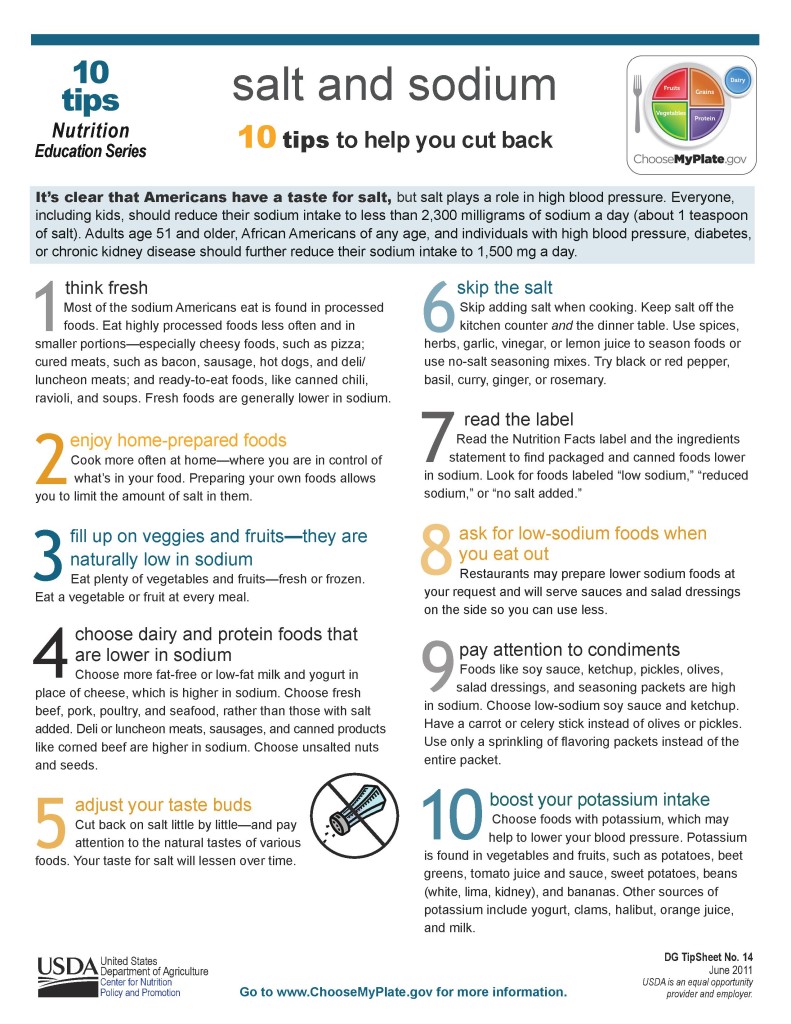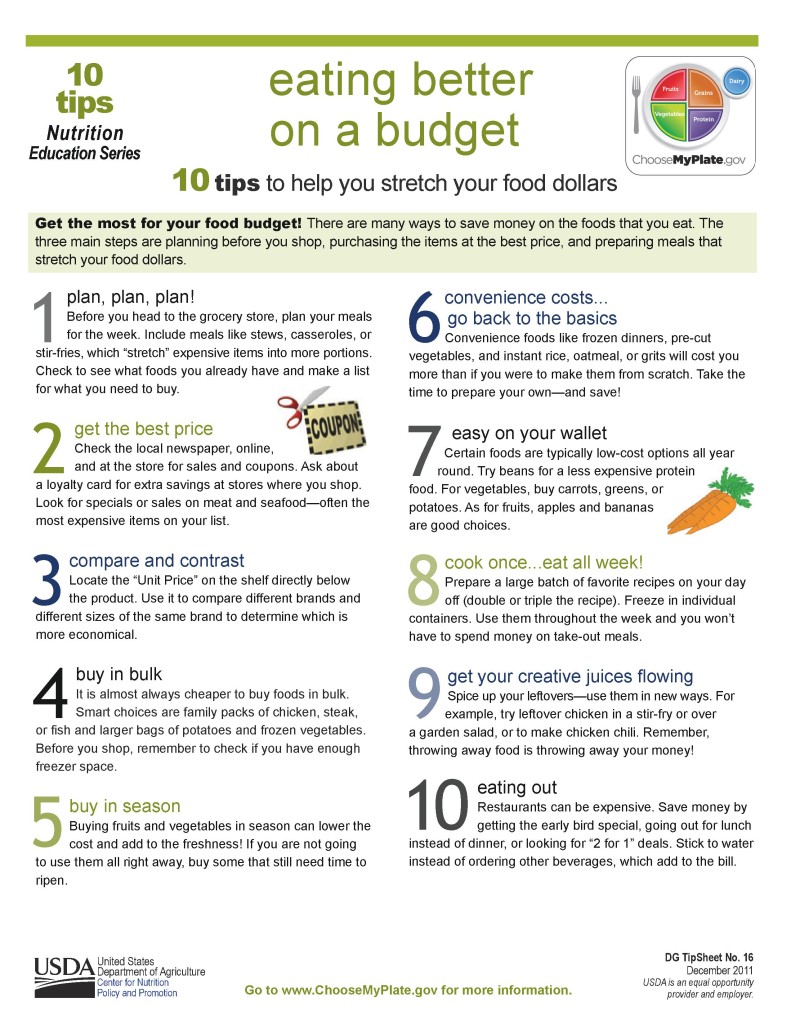Tips and Tricks to Eating Better for You and Your Family
Nutrition Tips
Vegetables – includes fresh, canned, & frozen
- Rinsing canned veggies reduces sodium by an average of 40%
- Adding veggies to sauces, soups, casseroles, and stir-fries adds fiber and nutrients
Fruits – includes fresh, canned, dried, frozen, & 100% fruit juice
- Draining canned fruits can remove excess sugar from syrups
- Dried fruits can be used as oatmeal and yogurt toppings, or in homemade trail mixes
- Extend juice products by combining each cup with water
- Mix canned fruits with their juices to make a “summery” pasta salad
Grains – includes bread, rice, pasta, flour, crackers, cereal, etc.
- Select whole grain items for more fiber and nutrients, if the products are available
- If you have picky eaters at home, you can mix half a box of whole wheat pasta with half a box of regular pasta to help acquire the taste for whole grain items
- Look for “whole” as the first ingredient on bread products to include more whole grains in your diet
- Enriched and whole grain products are the most economical sources of many vitamins and minerals
o Goal is “Half your grains whole!”
o Some think foods (bread, rice, potatoes, pasta) are high in calories, but often it is the toppings added to these foods (butter, margarine, sour cream, etc.)
Low-fat Dairy – includes milk, boxed milk, nonfat dry milk, evaporated milk, yogurt, and cheese
- Milk can be used as a substitute for water when making oatmeal to add more calcium
- Plain yogurt can be used as a substitution for sour cream and mayonnaise when cooking
- Substitute fat-free or 1% milk in recipes that call for whole milk
Lean Meat & Protein – includes fresh, frozen, or canned meats, peanut & other nut butters, beans, peas, nuts, and seeds
- Using beans as a replacement or addition when making tacos or other dishes adds fiber and protein, and extends the number of meals you can make
- Nuts are a great source of healthy fats shown to reduce risk of heart disease
- Draining canned beans can remove sodium, just like veggies!
- Try combining small amounts of lower-cost meats (poultry & fish) with bread, cereal, rice, pasta, or potatoes for hearty main dishes
- Encourage days such as, “Meatless Monday”
- Dry beans, dry peas, eggs, and peanut butter can be used in casseroles, soups, salads, and snacks – they provide the same nutrients at lower cost (and may be lower in fat too!)
- Cook enough beans for a few recipes – cooked beans will keep 3-5 days in the refrigerator, and can be used throughout the week
